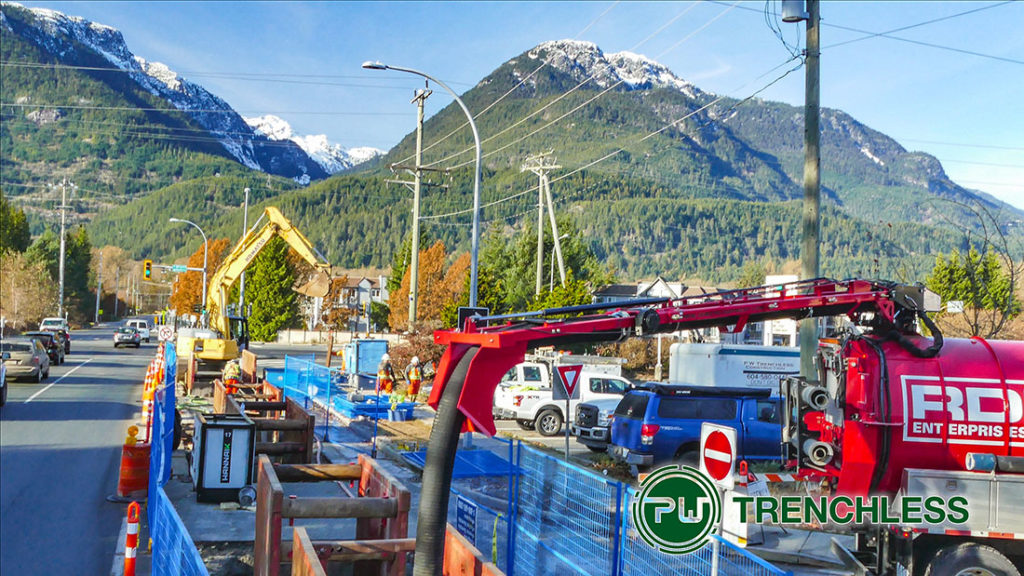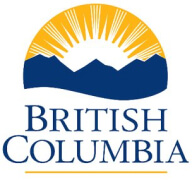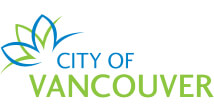
Among the great marvels of antiquity, few have the lasting impact and importance of Rome’s aqueducts.
First constructed in the ancient era, Roman aqueducts provided fresh water throughout the city of Rome—and later, throughout its expansive empire. These ancient plumbing systems spread across Europe as the empire itself grew. In turn, cities expanded. A steady supply of fresh water enabled intensive industry, high population growth, and better sanitation around the known world. Components of ancient water-carrying systems remain in use today.
Sanitation infrastructure remains every bit as crucial today. A functioning sewer and water system is the foundation of a healthy and prosperous society.
In 2004, famous medical journal The Lancet conducted a survey of its readers in celebration of the publication’s 175th anniversary. They asked their readers to identify “the greatest medical advancement of the past 175 years. Their readership—largely consisting of doctors—overwhelmingly selected “sewer and water infrastructure” as their top choice.
That’s right: modern physicians selected sanitation infrastructure—not antibiotics, not surgical techniques, but *pipes—*as the greatest medical innovation of the past 175 years.
Recent research from the World Health Organization suggests that access to clean water, sanitation, and hygiene could save 1.4 million lives each year. Poor hygiene or lack of access to clean drinking water is the cause of death for 7.6% of children under five. 89% of attributable deaths came from low and middle income countries lacking modern water and waste infrastructure.
Maintaining sewer and water infrastructure is essential to the continued health and prosperity of our cities and their residents. Despite how critical these systems are, infrastructure spending tends to be outpaced by growth and maintenance requirements.
Take Vancouver as an example. A city of its size might have approximately $30bn of sewer and water infrastructure, much of it installed fifty to one-hundred years ago.
Sewer and water infrastructure has a lifespan—around one hundred years on average. Based on the scope of existing infrastructure in Vancouver and its average age, about $300 million ought to be invested in repair and maintenance annually. Instead, the city spends roughly $100 million per year according to semi-annual Waste Management Act reports.
The reasons for undermaintained infrastructure are more complex than short-sighted cheapness by municipal government. Accessing and replacing underground infrastructure has never been more difficult.
PW Trenchless president David O’Sullivan explains:
“Today, there are so many more cars. A two-lane highway back then is six lanes today. You can’t dig up streets and interfere with people’s lives. That’s why trenchless technologies are so important.”
Conventional repair and replacement requires cutting through asphalt and removing massive volumes of earth to access each pipe. For every unit of pipe to be removed or replaced, 150 units of earth must be moved. This earth must be removed or stored. Damage to roadways is disruptive to commuters and residents, noisy, and reduces the longevity and value of the affected section of road.
These factors contribute to the lagging rate of infrastructure maintenance in cities across North America.
Trenchless technologies pave the way for less reactive infrastructure management. In many areas, water and sanitation infrastructure only gets replaced once it’s broken. This leads to a variety of issues. Fixing a problem is typically more expensive than proactively replacing aging pipes. Reactive management results in disruption of service. It can be costly to either retain a team for spot fixes or hire a team on an emergency basis.
When underground assets are managed reactively, lingering issues may not be addressed in a timely manner. This is especially critical as much of the world faces severe drought. Recent studies show that 25% of Europe’s available drinking water is lost due to leaky pipes. Countries like Ireland and Bulgaria lose over 50% of their water to leaks.
We all remember the Flint water crisis that began a decade ago, where aging infrastructure and improper management resulted in serious lead exposure for thousands of children. The crisis may have directly resulted in the death of twelve people. A full accounting of the economic impact of the crisis is tricky to pin down, but estimates including long-term impact on exposed children range as high as hundreds of billions of dollars.
The extreme impacts of delaying water infrastructure maintenance are clear. Ranging from ecological disaster to disease and even death, refusal to address water infrastructure brings with it serious societal cost.
Trenchless pipe repair and replacement is a solution to many of the challenges holding back infrastructure maintenance. Through a variety of techniques, trenchless pipe repair companies can mitigate the impact of repairs on commuters and residents. Trenchless repair is less environmentally disruptive, less noisy, and less carbon intensive than conventional repair. Advancements in pipe monitoring and remote inspection allow trenchless companies to prioritize work and identify urgent repairs without waiting for catastrophe to strike.
Given the critical importance of fresh water to our survival and to the economy at large, reducing water waste through infrastructure may be one of the best ways to address droughts and water shortages facing much of the world today.

There are many tools available to trenchless pipe repair companies, each adapted to different use cases. Some of the most common forms of trenchless technology include:
This is one of the oldest trenchless pipe rehabilitation techniques. It involves inserting a new, smaller diameter pipe into an existing larger pipe. This method takes less time compared to other trenchless methods. Long runs of pipe with minimum connections can be installed. It has the potential to be more disruptive than other trenchless methods. Manholes don’t provide adequate access to allow for sliplining, so insertion pits are created for each pipeline segment. Although the amount of earth excavated for these pits is less than the amount required by conventional excavate and replace methods, it may still result in disruptions to surface activities.
Also known as in-line expansion, this method demolishes the existing pipe with the use a bursting tool that pushes the existing pipe radially outward until it shatters into fragments, while simultaneously pulling the new pipe behind, thereby installing it. This method is preferred when the existing pipe has suffered significant damage. This is one of the fastest trenchless pipe rehabilitation techniques, but it includes two possible negatives: a disruption to the surrounding soil and the need to instal temporary rerouting infrastructure as the rehabilitated pipe is taken out of service.
This is a renewal process that involves inserting a flexible liner filled with a resin into a host pipe—the pre-existing pipe—using a liner inverter. The inverter expands until the liner presses against the outer walls of the existing pipe. When the resin in the liner cures (hardens, in a way similar to concrete), it reinforces the host pipe. Its drawback is an inability to correct any distortions to the existing pipe.
“Methods of trenchless pipe rehabilitation are like circles in a Venn diagram; they have some commonality but also stand on their own as well,” says O’Sullivan. “The two main criteria for determining which method will work best is suitability and cost effectiveness. For instance, CIPP is a suitable for sewer lines up to 24 inches (600 mm), although other factors come in to play as well. Sliplining is good for pipes from 18-30 inches in diameter, so you can see where those two methods overlap and other factors may determine which is the best method for that situation.”
An alternate tendering process where the contract is awarded to one entity which comprises both engineering and contracting.
Because PW Trenchless Construction offers such innovative solutions for underground utilities, it is often beneficial for the owner to request solutions based on a performance specification. This allows PW Trenchess to offer unique solutions while working with equally innovative engineering companies. Learn more about design - build here!
More InfoNew installation methodologies include HDD & traditional open cut Learn more about new installation here!
More InfoIn this day & age of pipe systems reaching the end of their projected lifespan, pipe replacement and pipe rehabilitation have become major fields of engineering.
PW Trenchless Construction provides viable options such as pipe bursting, loose fit lining and internal pipe re-construction whether partial & fully circumferential. Learn more about pipe replacement & rehabilitation here!
More InfoThe aging culverts under roads and highways in many case have reached the end of their engineered life-span. We consider the rehabilitation or replacement of these culverts to be vital to our built environment.
PW Trenchless has been a pioneer in working with MOTH, railway companies and municipalities in developing rehabilitation methodologies for the hundreds of thousands of culverts that currently exist in BC. We have offered solutions in both procurement and construction from design-build to sliplining, invert rehabilitation and full circumferential relining. Learn more about culvert rehabilitation here!
More InfoOften pipe failure can be concentrated to one section, for various reason, leaving the rest of the pipe in good condition. The repair of these localized failures are know as external point repairs (EPR's).
EPR's demonstrate PW's ability to work as both a trenchless and civil contractor, completing EPR contracts using our civil contracting skills and assisting other pure trenchless contractors who only have the capacity to work in an existing pipe. Learn more about point repairs here!
More InfoPipe upsizing is the fundamental concept of pipe bursting.
The vast majority of pipes are less than or equal to 200mm in diameter, but with today's densification practices of urban design, there is a major demand to increase current capacity to handle extra flow. Pipe bursting provides the ideal solution to this issue, particularly in an urban setting. Learn more about pipe upsizing here!
More InfoHorizontal Directional Drilling is a low impact Trenchless construction service where pipe is installed in a shallow arc along a bore path which has been created by a drilling rig. Often the terms Horizontal Directional Drilling (HDD) and Directional Boring are used interchangeably, but in our industry we use the word “boring” when we utilize smaller sized drilling rigs with small diameters for short crossings in the hundreds of feet, and we use the word “drilling” when we utilize larger rigs with large diameters for long crossings in the thousands of feet. Learn more about horizontal directional drilling here!
More InfoPrimus Line® is a flexible sliplining solution for the trenchless rehabilitation of pressure pipes. The system consists of a flexible Kevlar® reinforced liner and specially developed end fittings. Primus Line® is not bonded to the host pipe and is self-supporting. An annulus remains between Primus Line® and the host pipe.
Developed by experienced engineers, the system is suitable for different media as well as various application needs and has already proven itself in numerous projects.Learn more about primus lining here!
More Info
























When you join PWT, you become part of a community of people who are engaged in the most innovative practices in the Trenchless Industry. We have been instrumental in setting up a scientific method for cities to gain carbon offsets/credits from their use of trenchless construction. This system has been reviewed by the BC Government and has been approved as of December 2018. We expect to see it in common use shortly.
Subscribe to our newsletter for cutting-edge industry updates, expert knowledge, and exclusive content.